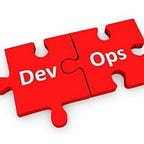How to create Namespaces in Kubernetes in AWS? (K8s)
Kubernetes namespace is an abstraction to support multiple virtual clusters on the same physical cluster.
You can have multiple namespaces within one Kubernetes cluster, and they are all logically isolated from one another.
Namespaces provide a logical separation of cluster resources between multiple users, teams, projects, and even customers. Namespaces are how to divide cluster resources between multiple users (via resource quota).
Namespaces have below functionalities and on basis of the same we tend to use will use them.
- Within the same Namespace, Pod to Pod communication.
- Namespaces are virtual cluster sitting on top of physical cluster.
- Namespaces provide a logical separation between the environments.
- Namespaces are only hidden from each other but are not fully isolated from each other.
- One service in a Namespace can talk to another service in another Namespace if the target and sources are used with the full name which includes service/object name followed by Namespace.
However, if we use the only service name and DNS internally identifies it, resolves it within the same Namespace.
Namespaces also provide the scope for names, the name of resources within one namespace must be unique.
Namespaces are intended for use in environments (Dev, QA, Test, and Prod) with many users, or projects.
List of namespaces:
$ kubectl get namespacesNAME STATUS AGE
default Active 1d
kube-system Active 1d
kube-public Active 1d
Kubernetes ships with three initial namespaces:
default:
The default namespace for all objects not belonging to other namespaces. The default namespace is employed to carry the default set of pods, services, and deployments utilized by the cluster. Kubernetes tooling is ready up out of the box to use this namespace and you can’t delete it.
Kube-system:
The namespace for objects created by the Kubernetes system.
Kube-public:
The namespace for resources that are publicly available/readable by all.
Create a namespace
Let’s create namespaces for development, QA, and Production.
Use kubectl create command:
kubectl create namespace developmentnamespace/development create
kubectl create namespace qanamespace/qa createdkubectl create namespace productionnamespace/production created
You can also create a YAML file to create namespaces as below:
apiVersion: v1
kind: Namespace
metadata:
name: developmentVerify the new namespace
kubectl get namespacesNAME STATUS AGEdefault Active 2d
development Active 3m
kube-system Active 1d
kube-public Active 1d
production Active 4m
perf Active 4m
Create objects in a specific namespace:
You can choose a namespace while creating an object/resource.
Use — namespace or -n to specify the namespace as follows:
kubectl run nginx --image=nginx --namespace developmentor
kubectl run nginx --image=nginx -n developmentYou can also specify the namespace in the YAML file as below:
apiVersion: v1
kind: Pod
metadata:
name: nginx
namespace: developmentList/Modify/Delete the objects in a namespace
Use — namespace or -n to specify the namespace while executing kubectl commands.
kubectl get pods -n developmentkubectl describe pod nginx -n developmentkubectl delete pod nginx -n development
Delete Namespace
Use the kubectl delete command to delete a namespace. When you delete a namespace, it will delete all the objects and resources created in that namespace.
kubectl delete namespaces development qa namespace "development" deleted namespace "qa" deletedThe above commands execute in asynchronous mode.
The status of the namespace would show up as Terminating until it gets completely deleted.
Notes
Note 1: Use — all-namespaces option for all namespaces.
Note 2: Not All Objects are in a Namespace
Most Kubernetes objects/resources such as pods, services, replication controllers, and others are in some namespaces.
However, namespace resources don’t seem to be themselves in an exceeding namespace. And low-level resources, such as nodes and persistent volumes, are not in any namespace.
👋 Join us today !!
If this post was helpful, please click the clap 👏 button below a few times to show your support! ⬇
